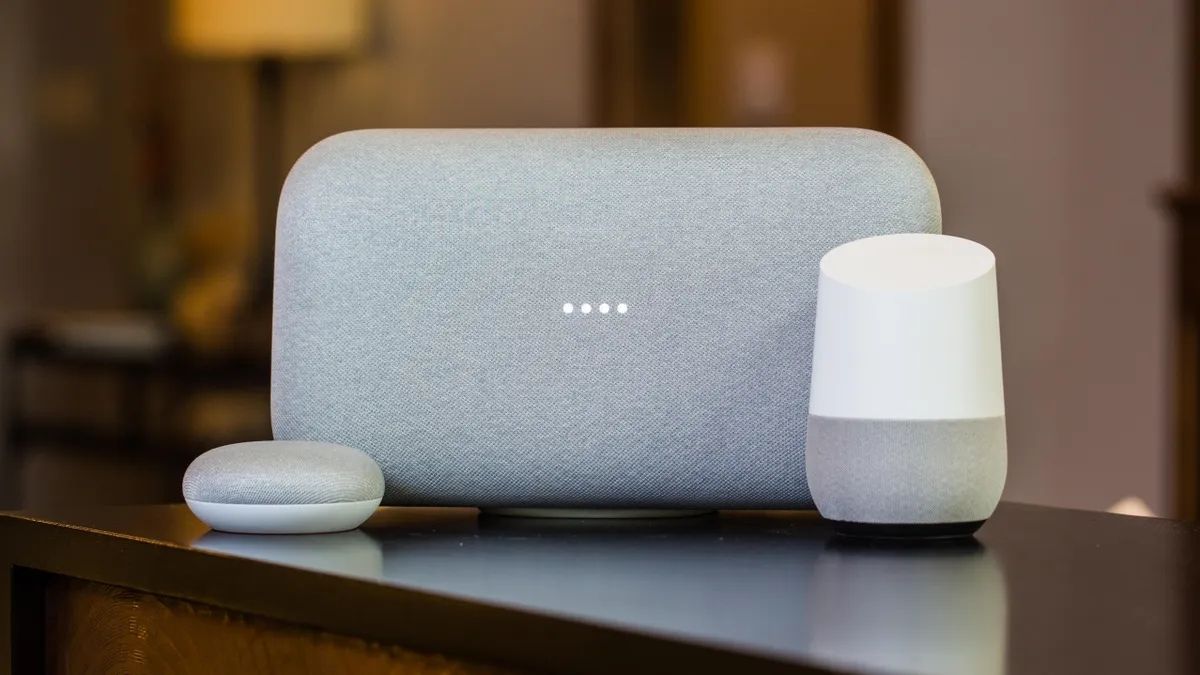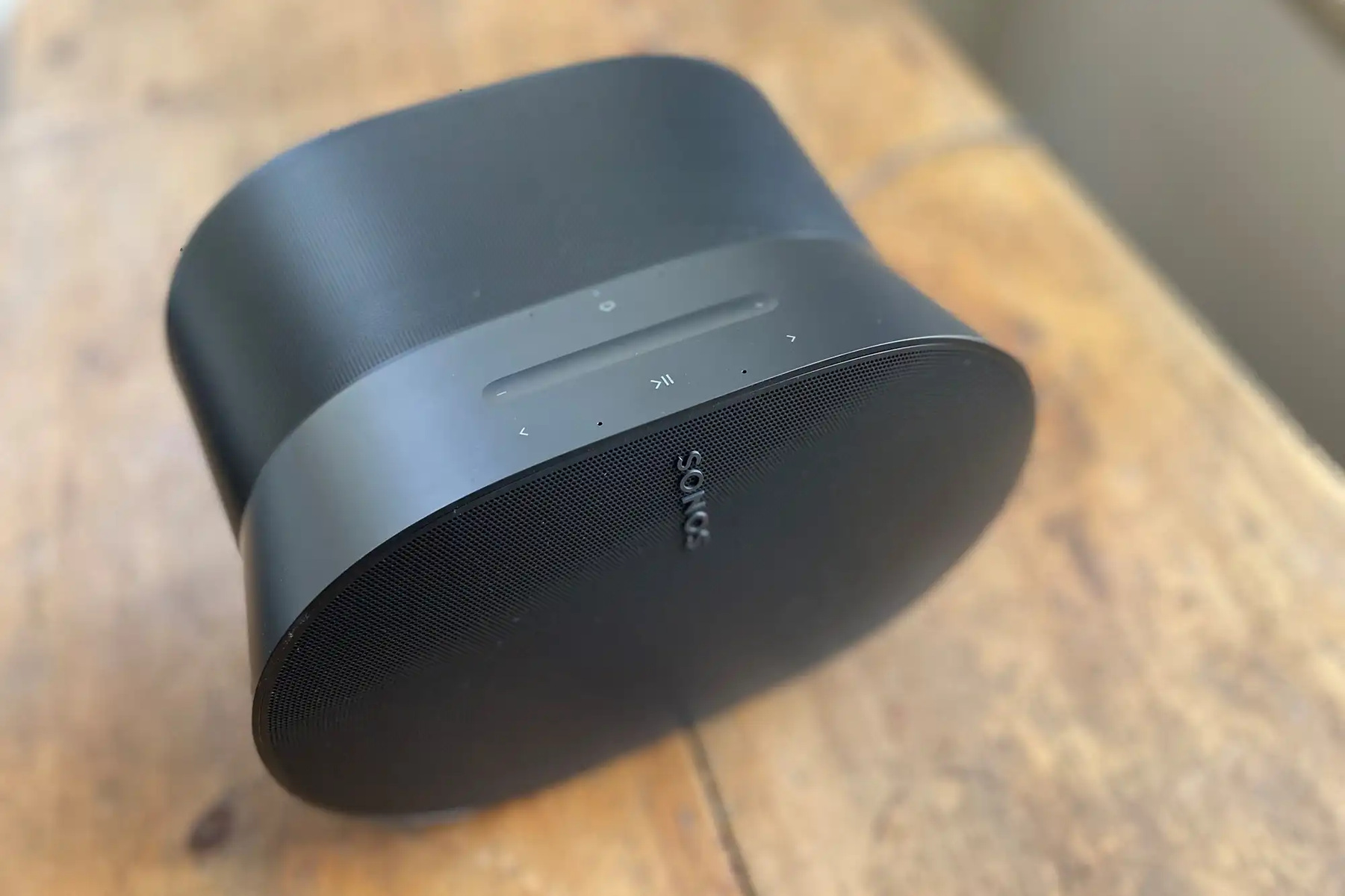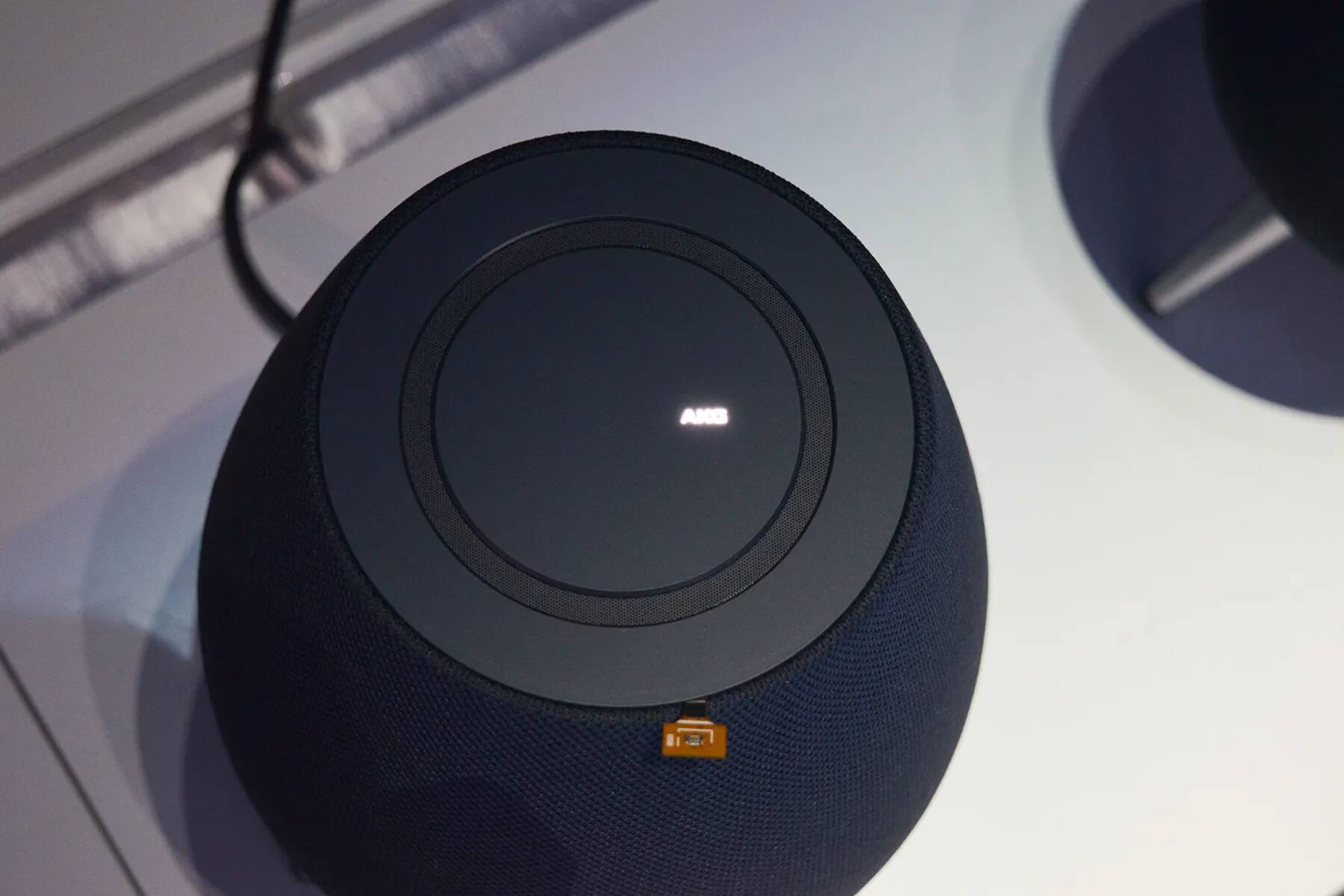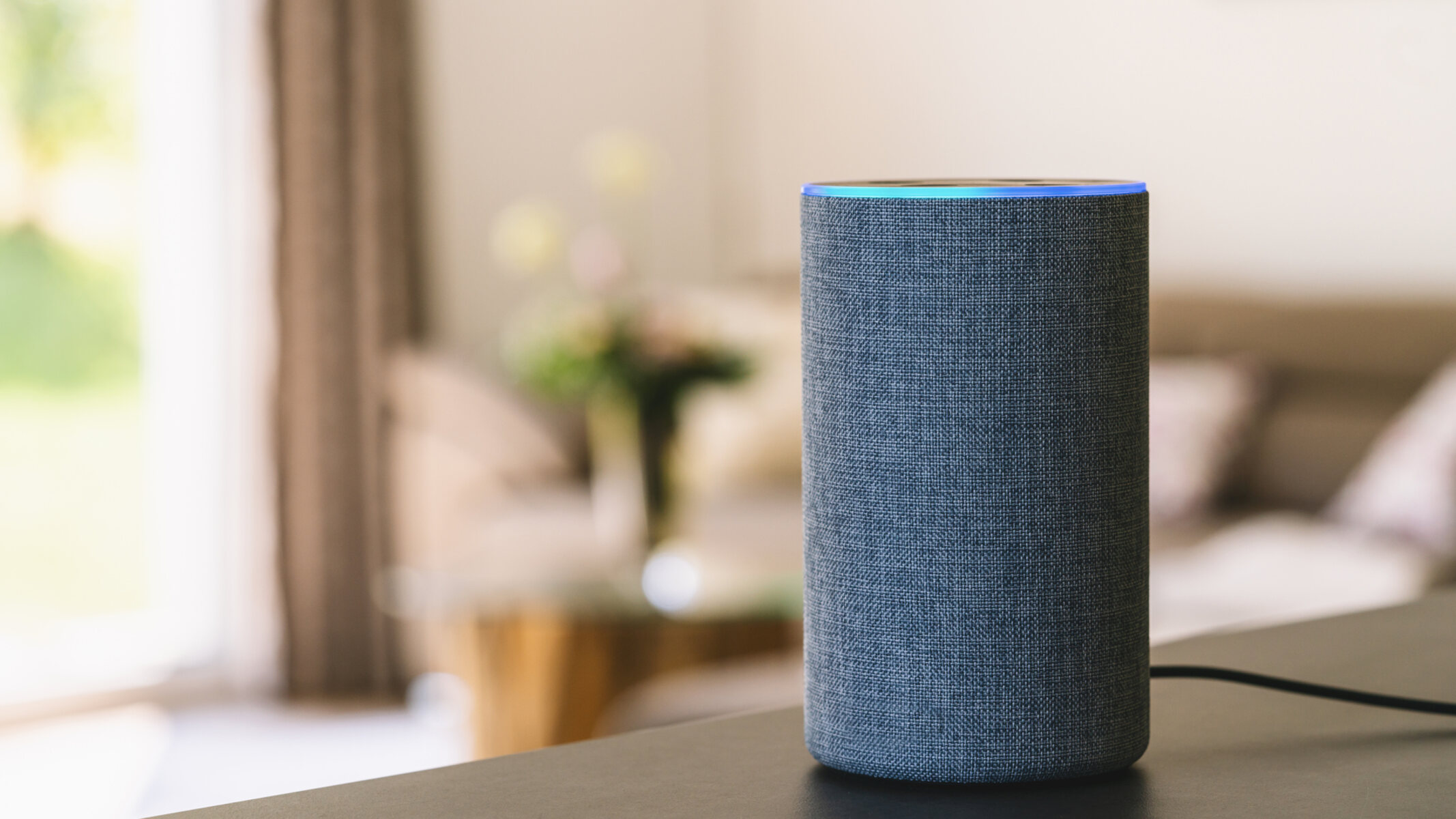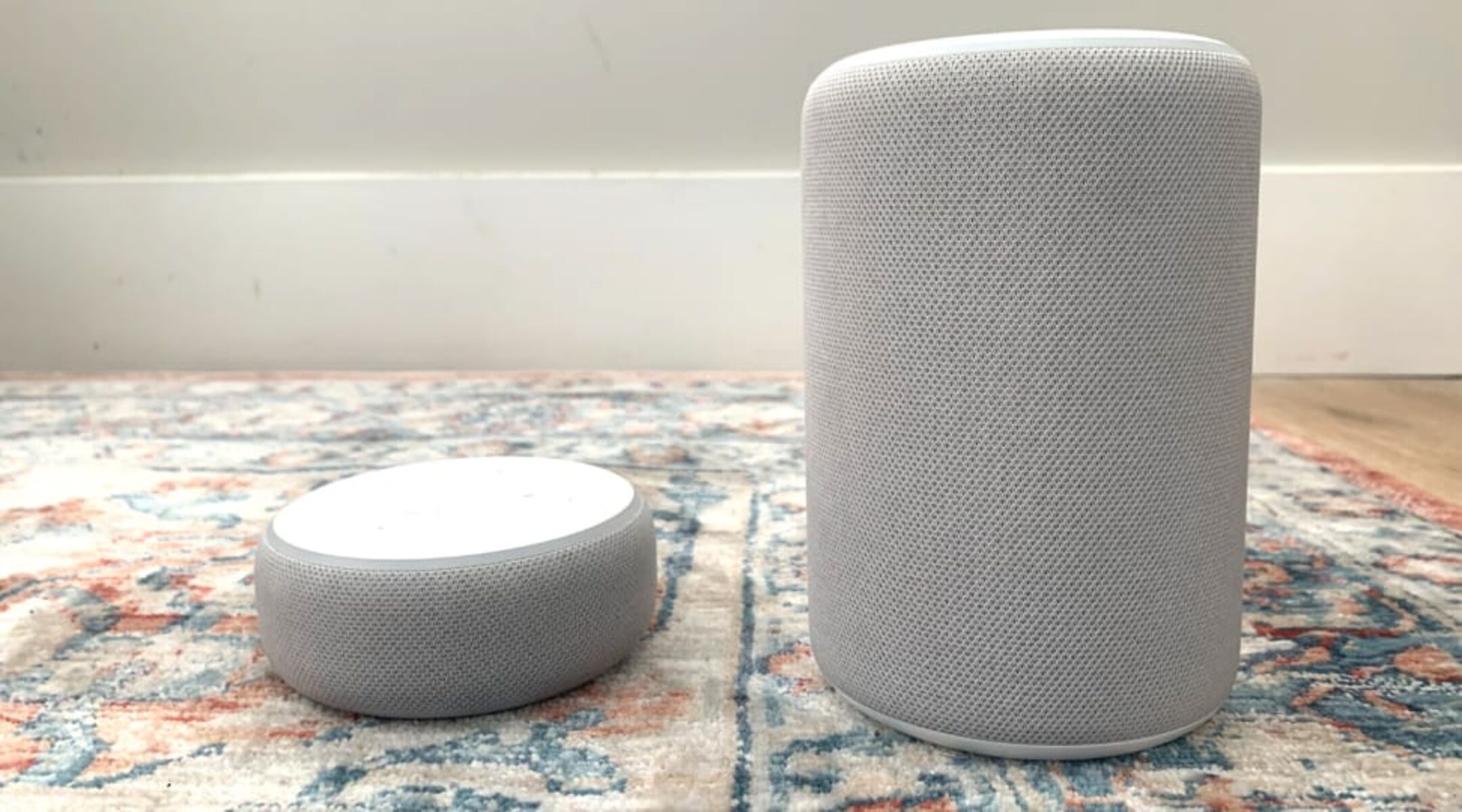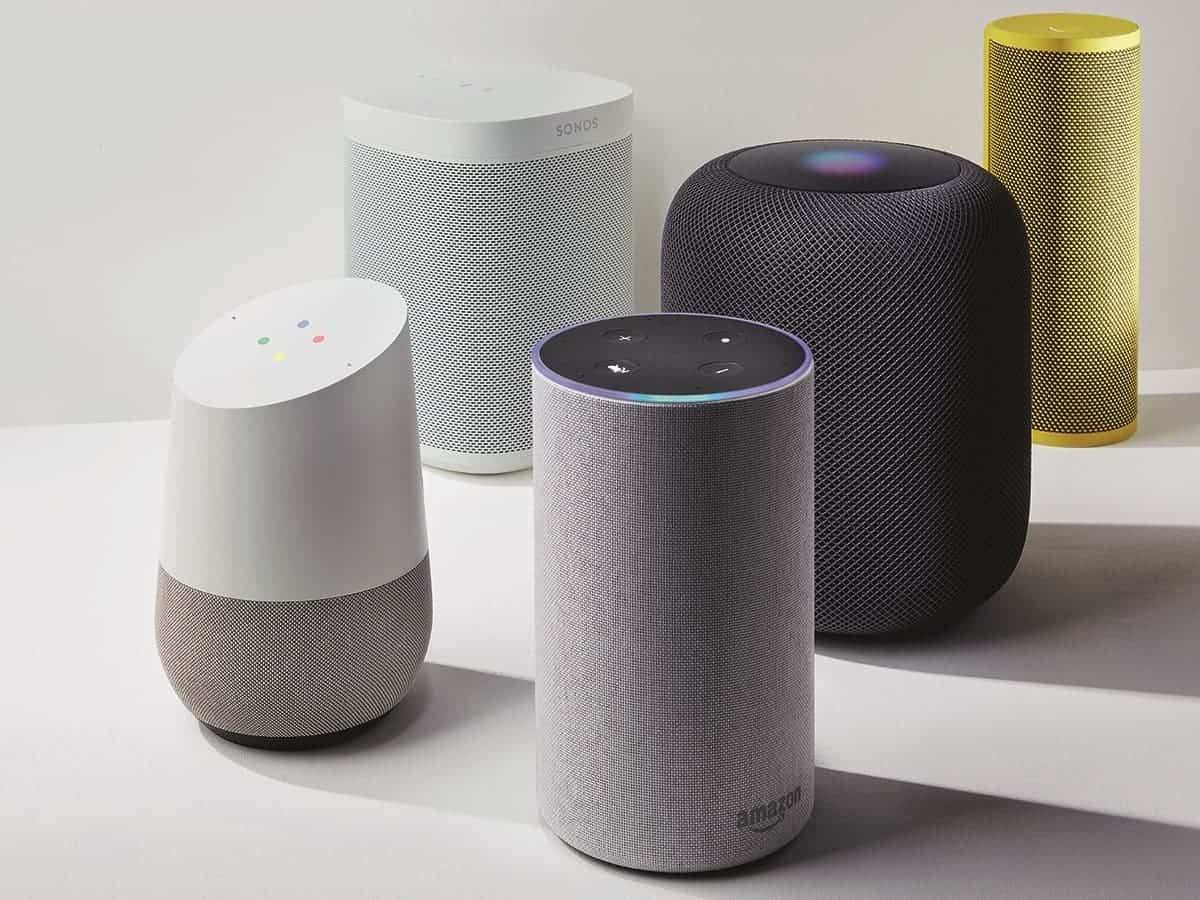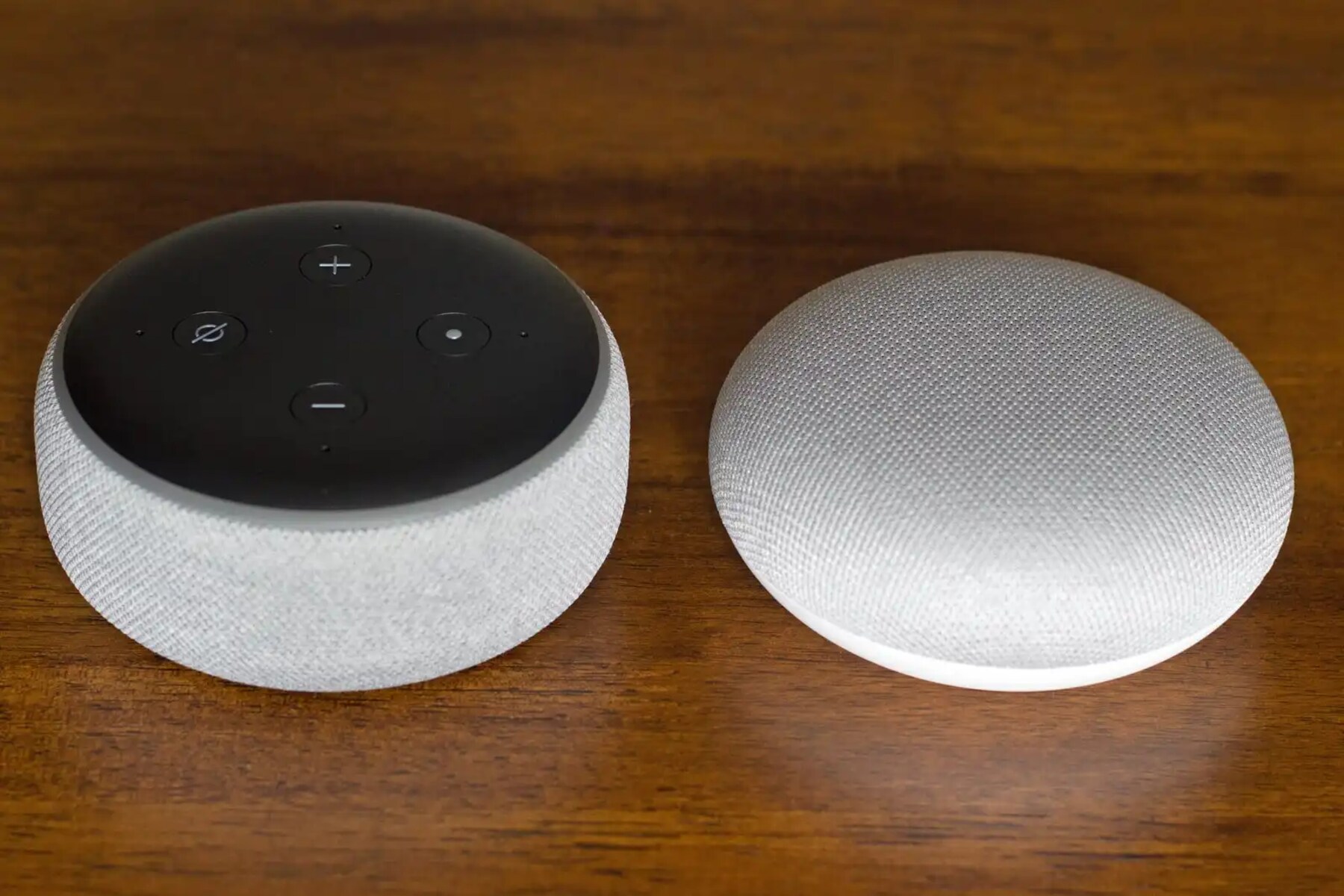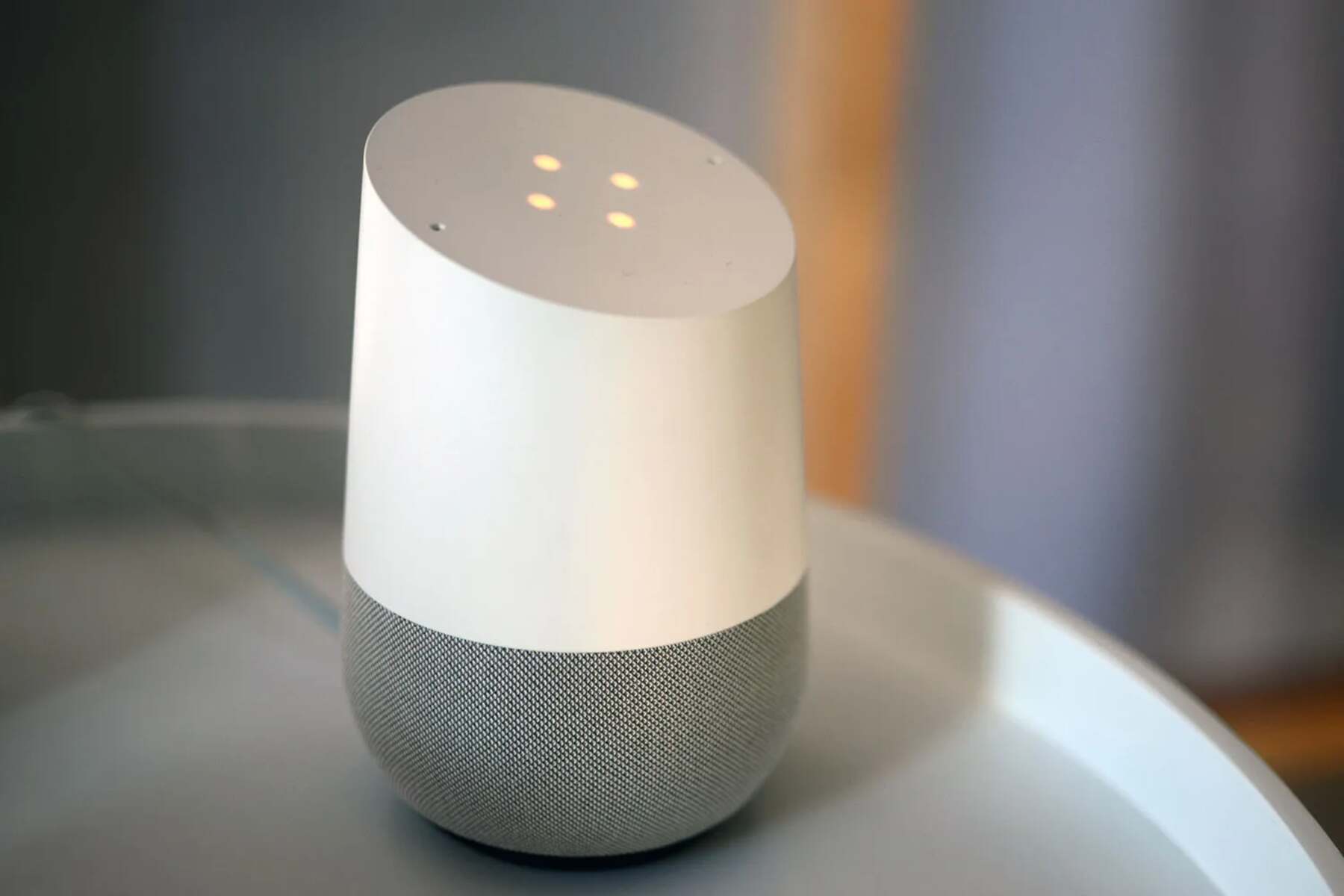Introduction
Welcome to the world of smart home speakers! In today’s technologically advanced era, smart home speakers have become an indispensable part of our everyday lives. These innovative devices have revolutionized the way we interact with our homes, providing us with a seamless and convenient way to control various aspects of our living spaces.
A smart home speaker, also known as a voice-activated speaker or virtual assistant speaker, is a wireless device designed to respond to voice commands and perform various tasks. These tasks range from playing music and answering queries to controlling smart home devices and providing up-to-date information.
The popularity of smart home speakers can be attributed to the advancements in natural language processing and artificial intelligence, which have made it possible to create intelligent voice assistants that can understand and respond to human commands accurately.
One of the defining features of a smart home speaker is its ability to connect to the internet, allowing users to access a wide range of online services and capabilities. This connectivity enables users to stream music from popular platforms, such as Spotify and Apple Music, as well as access news updates, weather forecasts, and much more.
The convenience and versatility of smart home speakers have made them an integral part of many households. With just a command, you can play your favorite music playlist, dim the lights, set the thermostat, and even order groceries without lifting a finger.
In this article, we will delve deeper into the world of smart home speakers, exploring their features, working mechanisms, benefits, popular brands, setup process, and privacy concerns. Whether you are considering purchasing a smart home speaker or simply want to enhance your understanding of this innovative technology, this article will serve as a comprehensive guide to help you navigate through the exciting world of smart home speakers.
Definition of a Smart Home Speaker
A smart home speaker is a voice-activated device that uses artificial intelligence and wireless connectivity to perform various tasks and control smart home devices through voice commands. It serves as a hub for managing home automation systems and integrating different devices, making your living space more convenient and interactive.
Smart home speakers are equipped with built-in voice assistants, such as Amazon Alexa, Google Assistant, or Apple Siri, which enable users to interact with the device using natural language. This means that you can simply speak commands or ask questions, and the smart speaker will respond, executing the requested action or providing information.
These devices feature a combination of powerful speakers and intelligent microphones that allow for clear voice recognition and audio playback. They can play music, podcasts, audiobooks, and even serve as a hands-free speakerphone for making calls.
Furthermore, a smart home speaker can be connected to other smart devices in your home, such as thermostats, lighting systems, door locks, security cameras, and more. This interconnectivity allows you to control and monitor these devices remotely or through voice commands, providing a seamless and integrated smart home experience.
To activate a smart home speaker, you usually use a wake word, such as “Hey Google” or “Alexa,” followed by your command or question. The speaker then processes your voice input, analyzes the request, and responds accordingly. This sophisticated technology enables the smart home speaker to understand and adapt to your preferences over time, creating a personalized experience.
The increasing popularity and widespread adoption of smart home speakers have led to a wide range of models and brands available in the market. These speakers come in various shapes, sizes, and designs to suit different preferences and home aesthetics, ensuring that there is something for everyone.
Overall, a smart home speaker acts as a central hub that simplifies your daily routine, enhances entertainment options, and streamlines the management of your smart home devices. By utilizing the power of voice commands and advanced technology, it brings a new level of convenience and automation to your living space.
Features of a Smart Home Speaker
Smart home speakers are equipped with a wide range of features that make them versatile and convenient devices for managing your home and enhancing your daily activities. Let’s explore some of the key features that you can expect from a smart home speaker:
- Voice Control: The primary feature of a smart home speaker is its voice control capabilities. You can easily interact with the device using natural language commands, enabling hands-free operation and reducing the need for physical buttons or controls.
- Virtual Assistant: Smart home speakers come with built-in virtual assistants, such as Amazon Alexa, Google Assistant, or Apple Siri. These assistants can perform a wide range of tasks, such as answering questions, setting reminders, providing weather updates, and even controlling other smart devices in your home.
- Music Streaming: With a smart home speaker, you can enjoy seamless music streaming from popular platforms like Spotify, Apple Music, or Amazon Music. You can request specific songs, create playlists, and even ask for recommendations based on your music preferences.
- Smart Home Integration: One of the standout features of a smart home speaker is its ability to integrate with other smart devices in your home. You can control lights, thermostats, security cameras, door locks, and more, all with simple voice commands.
- Multi-Room Audio: Many smart home speakers support multi-room audio, allowing you to synchronize music playback across different rooms in your home. This feature enhances the listening experience, creating an immersive sound environment throughout your living space.
- Hands-Free Calls: Smart home speakers often come with built-in microphones and speakerphone capabilities, enabling you to make hands-free calls. You can dial phone numbers, answer incoming calls, and even use voice commands to initiate conference calls.
- Personalized Voice Recognition: Smart home speakers utilize advanced voice recognition technology to distinguish between different users in a household. This enables each individual to have personalized experiences with tailored responses and preferences.
- Smart Alarms and Timers: You can set alarms and timers using your smart home speaker, allowing you to wake up to your favorite music or be notified when it’s time to perform specific tasks.
- Information and Updates: By simply asking your smart home speaker, you can get instant access to a wealth of information, such as news updates, weather forecasts, sports scores, stock market updates, and more.
- Third-Party App Integration: Many smart home speakers support third-party app integrations, allowing you to extend their functionality. You can connect them with apps like IFTTT (If This, Then That) to create customized automation routines.
These are just some of the many features that smart home speakers offer. With their ever-evolving technology, these devices continue to add new capabilities, making them an essential part of the modern smart home ecosystem.
How Does a Smart Home Speaker Work?
At first glance, a smart home speaker may seem like a simple device, but behind its sleek exterior lies sophisticated technology that enables it to understand and respond to your voice commands. Let’s take a closer look at how a smart home speaker works:
1. Wake Word Detection: Smart home speakers are always listening for a specific wake word, such as “Hey Siri,” “Alexa,” or “OK Google.” When the speaker hears the wake word, it activates and starts recording the audio.
2. Audio Processing: After the wake word is detected, the speaker processes the audio data it receives. This involves removing any background noise and analyzing the voice input to extract the relevant information.
3. Natural Language Processing (NLP): NLP is a key component of a smart home speaker’s functionality. This technology allows the speaker to understand and interpret the meaning behind your voice commands. It analyzes the words, sentence structure, and context to determine the most accurate response.
4. Cloud-Based Voice Recognition: Most smart home speakers leverage cloud computing to handle voice recognition. The audio data is sent to the cloud, where advanced algorithms and machine learning models are used to convert the spoken words into text and understand the user’s intent.
5. Virtual Assistant Integration: Once the voice input is converted into text and the user’s intent is determined, the smart home speaker’s virtual assistant, such as Alexa, Google Assistant, or Siri, comes into play. It processes the text and generates an appropriate response or initiates the requested action.
6. Device Control: If a voice command involves controlling other smart devices in your home, the smart home speaker communicates with those devices through wireless protocols like Wi-Fi, Zigbee, or Bluetooth. It sends commands to turn on/off lights, adjust thermostat settings, lock doors, and perform various other tasks.
7. Personalization and Machine Learning: Smart home speakers can learn and adapt to your preferences over time. By analyzing your usage patterns and interactions, the speaker can provide personalized recommendations, understand your voice better, and improve its overall performance.
8. Privacy and Data Security: It’s important to note that smart home speakers are designed with strict privacy and security measures in place. While the speaker may always be listening for the wake word, the audio data is typically processed locally and only sent to the cloud once the wake word is detected. Additionally, you have control over the data that is stored and shared, along with the ability to delete voice recordings if desired.
By combining these various technologies and intelligent algorithms, smart home speakers bring a new level of convenience and hands-free control to our daily lives. They continuously evolve and improve their capabilities through software updates and advancements in voice recognition and natural language processing, ensuring a seamless and intuitive user experience.
Benefits of Having a Smart Home Speaker
Having a smart home speaker can offer numerous benefits that enhance convenience, entertainment, and control within your living space. Let’s explore some of the advantages of owning a smart home speaker:
- Hands-Free Operation: One of the most significant advantages of a smart home speaker is the ability to control your devices and perform tasks using voice commands, eliminating the need for physical interaction.
- Convenient Home Automation: With a smart home speaker, you can easily integrate and control various smart devices in your home, such as lights, thermostats, security cameras, and door locks, creating a cohesive and automated home environment.
- Effortless Music Streaming: Enjoy seamless access to your favorite music and audio content from popular streaming platforms, eliminating the need for separate music players and providing a convenient and immersive listening experience.
- Instant Access to Information: By simply asking your smart home speaker, you can retrieve instant information updates, such as weather forecasts, news headlines, sports scores, and even trivia facts, keeping you informed and up-to-date.
- Hands-Free Calls and Messaging: Smart home speakers often come with built-in speakerphone capabilities, allowing you to make hands-free calls and send messages simply by using your voice.
- Streamlined Daily Routine: A smart home speaker can help you stay organized and on track by setting reminders, alarms, and timers, ensuring that you never miss important appointments or tasks.
- Personalized Experience: Smart home speakers can learn your preferences over time and provide personalized recommendations, such as music suggestions, news topics, and even tailored routines based on your daily habits.
- Multi-Room Audio: Many smart home speakers support multi-room audio, allowing you to synchronize music playback across different rooms, creating an immersive and synchronized audio experience throughout your home.
- Enhanced Accessibility: For individuals with mobility issues or disabilities, smart home speakers provide a convenient and accessible way to control devices, obtain information, and stay connected.
- Energy Efficiency: By integrating your smart home speaker with devices like smart thermostats and lighting systems, you can optimize energy usage and reduce energy waste, leading to potential cost savings.
- Entertainment and Fun: Smart home speakers come with various interactive features, such as jokes, quizzes, and games, providing entertainment for both children and adults.
These are just a few of the many benefits of having a smart home speaker. They simplify daily tasks, provide entertainment options, and offer a level of control and convenience that enhances your overall lifestyle and living experience.
Popular Smart Home Speaker Brands
The market for smart home speakers has witnessed significant growth in recent years, leading to a variety of brands offering their own unique devices. Let’s take a look at some of the popular smart home speaker brands:
- Amazon: Amazon’s smart home speaker lineup is dominated by the Echo devices powered by its virtual assistant, Alexa. Echo speakers are known for their wide range of features, affordability, and seamless integration with various smart home devices.
- Google: Google has made its mark in the smart home speaker market with its Google Home series, powered by the intelligent Google Assistant. These speakers offer excellent audio quality and are known for their tight integration with Google services and ecosystem.
- Apple: Apple’s smart home speaker, the HomePod, offers a high-quality audio experience coupled with the power of Siri. It is designed to seamlessly integrate with Apple devices and services, making it an ideal choice for Apple ecosystem users.
- Sonos: Sonos offers a range of smart speakers that deliver exceptional sound quality and multi-room audio capabilities. The Sonos speakers can be controlled via voice commands using Google Assistant or Alexa, or through the Sonos mobile app.
- Bose: Bose smart speakers, such as the Bose Home Speaker 500 and the Bose Soundbar 700, combine impressive sound quality with built-in virtual assistants such as Google Assistant and Amazon Alexa, making them a popular choice for audio enthusiasts.
- Samsung: Samsung’s smart home speaker, the Galaxy Home series, offers premium audio and smart home control capabilities. These speakers are powered by Samsung’s Bixby virtual assistant and provide seamless integration for Samsung Galaxy device users.
- Sony: Sony offers a range of smart speakers that provide immersive audio experiences and integration with Google Assistant. These speakers are designed to provide high-quality sound for music enthusiasts.
These brands represent just a fraction of the options available in the market. Each brand has its own unique set of features, design aesthetics, and ecosystem compatibility. The choice ultimately depends on your preferences, budget, and the level of integration you desire with your existing smart home devices.
It’s worth noting that the smart home speaker market is highly competitive, and new brands and models continue to emerge, offering innovative features and improved performance. Before making a purchase, it is recommended to research and compare different brands and models to find the one that best suits your needs and preferences.
Comparison of Smart Home Speaker Models
As the smart home speaker market expands, there is a wide range of models available, each offering unique features and capabilities. Let’s compare some key aspects of different smart home speaker models:
- Audio Quality: The audio quality of a smart home speaker is an important consideration. Some models prioritize high-quality audio, while others offer a more balanced audio experience with emphasis on voice recognition.
- Virtual Assistant: Different smart home speakers are powered by various virtual assistants, such as Amazon Alexa, Google Assistant, or Apple Siri. The capabilities and compatibility of these assistants can vary, so it’s essential to choose one that aligns with your preferences and existing devices.
- Device Compatibility: Consider the compatibility of the smart home speaker with other devices in your ecosystem. Some speakers integrate seamlessly with a wide range of smart devices, while others have more limited compatibility.
- Smart Home Control: Look for the ability of the smart home speaker to control various smart devices and systems in your home. This includes compatibility with popular smart home protocols, such as Zigbee or Z-Wave.
- Multi-room Audio: If you’re interested in synchronizing audio playback across multiple rooms, check for multi-room audio capabilities offered by the smart home speaker, allowing you to enjoy a seamless audio experience throughout your home.
- Privacy and Data Security: Consider the privacy features and data security measures implemented by the smart home speaker manufacturer. Look for options to disable or delete voice recordings and ensure that your personal information is protected.
- Design and Aesthetics: The design and aesthetic appeal of a smart home speaker can be an important factor if you value the speaker’s appearance in your home. Consider the size, color options, and overall design that matches your personal style and home decor.
- Price: Compare the prices of different smart home speakers and consider the value they offer in terms of features and performance. Keep in mind that higher-priced models often offer more advanced features and audio quality.
- User Reviews: Reading user reviews and ratings can provide valuable insights into the performance, reliability, and user satisfaction of different smart home speaker models. This can help you make an informed decision based on real-life experiences of other users.
Remember that the best smart home speaker for you depends on your specific needs, preferences, and budget. It’s important to carefully consider these factors and prioritize the features that are most important to you, ensuring that you choose a smart home speaker that perfectly fits your requirements.
Setting up a Smart Home Speaker
Setting up a smart home speaker is a relatively simple process that involves a few key steps. While the exact setup process may vary slightly depending on the brand and model of the speaker, the following are general guidelines to help you get started:
- Unboxing and Powering On: Start by unboxing the smart home speaker and locating the power cord. Plug in the power cord into a wall outlet and ensure that the speaker is powered on.
- Download and Launch the App: Most smart home speakers require a companion mobile app for setup. Download the app associated with the specific brand and model of the speaker from the App Store or Google Play Store. Launch the app once it is installed.
- Create an Account: Follow the prompts in the app to create an account, if required. This account allows you to personalize your settings and integrate with other smart devices.
- Connect to Wi-Fi: The app will guide you through the process of connecting the smart home speaker to your Wi-Fi network. Enter your Wi-Fi credentials when prompted, and allow the speaker to establish a connection to the network.
- Enable Permissions: Grant necessary permissions to the app, such as accessing your location or contacts. These permissions may be required for certain features, such as controlling smart home devices or providing local information.
- Set Up Voice Assistant: Configure the voice assistant associated with the smart home speaker. This may involve agreeing to terms and conditions and selecting your preferred language or accent.
- Test the Speaker: Once the setup is complete, test the speaker by using a voice command or asking a question to ensure it is functioning properly. Adjust the volume settings as desired.
- Explore Additional Features: Take the time to explore the various features offered by the smart home speaker through the companion app. This may include setting up voice profiles, personalizing settings, or linking external music streaming accounts.
- Integrate with Smart Home Devices: If you have other smart home devices, such as smart lights, thermostats, or cameras, use the app to connect and integrate them with your smart home speaker, allowing for centralized control.
Following these setup steps will get your smart home speaker up and running. Just remember to consult the specific setup guide provided by the manufacturer if you encounter any difficulties or encounter any additional steps that are unique to your particular smart home speaker model.
Controlling a Smart Home Speaker
A smart home speaker offers several convenient ways to control its functions and interact with the device. Here are some of the common methods for controlling a smart home speaker:
- Voice Commands: The primary and most intuitive way to control a smart home speaker is through voice commands. Simply use the wake word, such as “Hey Siri,” “Alexa,” or “OK Google,” followed by your command or question. The speaker will interpret and execute the requested action accordingly.
- Physical Controls: Many smart home speakers include physical controls for basic functions. These may include buttons to adjust volume, play/pause music, or activate the voice assistant. These controls can be useful when you need to quickly adjust settings without using voice commands.
- Companion App: Smart home speakers often have companion mobile apps that allow for more advanced control and customization. These apps provide additional settings, such as equalizer adjustments, music streaming setup, and device management. You can use the app to fine-tune the speaker’s settings according to your preferences.
- Smartphone Integration: Smart home speakers can be integrated with your smartphone’s virtual assistant, such as Siri or Google Assistant. This enables you to control the speaker using voice commands directly from your smartphone, providing an alternative method of control.
- External Devices: Many smart home speakers support connectivity with external devices, such as smartphones, tablets, or laptops. You can use these devices to control the speaker via apps or compatible software programs, allowing for a more enhanced and integrated control experience.
- Routine and Automation: Smart home speakers often offer the ability to create routines or automation scenarios. With routines, you can configure multiple actions to be triggered by a single voice command, such as turning off the lights, adjusting the thermostat, and playing relaxing music when saying “Goodnight.”
- Touch or Tap Gestures: Some smart home speakers come with touch-sensitive or tap gestures on their surfaces. These gestures let you control playback, adjust volume, or skip tracks by tapping or swiping on the speaker’s surface.
- Smartphone Widgets: Some smart home speaker apps offer smartphone widgets that provide quick access to basic controls, allowing you to control the speaker’s functions directly from your device’s home screen.
Controlling a smart home speaker is designed to be user-friendly and adaptable to your preferences and needs. Whether it’s using voice commands, physical controls, or companion apps, these various methods provide flexibility in how you interact with and manage your smart home speaker.
Integrating a Smart Home Speaker with Other Devices
A significant advantage of a smart home speaker is its ability to seamlessly integrate with other smart devices, creating a cohesive and interconnected home automation ecosystem. Here are some ways to integrate a smart home speaker with other devices:
- Smart Lighting: Connect your smart home speaker with compatible smart lighting systems, such as Philips Hue or LIFX. This allows you to control the lights using voice commands, create lighting scenes, and even synchronize lighting with music or other smart home events.
- Thermostats and Climate Control: Integrate your smart home speaker with smart thermostats like Nest or ecobee. This integration enables you to adjust temperature settings, set schedules, and control climate settings using voice commands, creating a comfortable and energy-efficient home environment.
- Smart Locks and Security Systems: Connect your smart home speaker with compatible smart locks and security systems, such as August or Ring. This integration allows you to lock and unlock doors, check the status of security devices, and even receive notifications about security events using voice commands.
- Media Streaming Devices: If you have media streaming devices like Chromecast or Apple TV, integrate them with your smart home speaker. Control your media playback, launch specific shows or movies, and adjust volume using voice commands, creating a hands-free entertainment experience.
- Smart Home Cameras: Integrate your smart home speaker with security cameras like Nest Cam or Arlo. This allows you to view live camera feeds on compatible smart displays or TVs, check for package deliveries, and even control camera features using voice commands.
- Smart Appliances: Connect your smart home speaker with compatible smart appliances, such as refrigerators, ovens, or washing machines. This integration enables you to check status, start or stop appliance functions, and receive alerts or notifications using simple voice commands.
- Smart Sprinkler Systems: Integrate your smart home speaker with smart sprinkler systems like Rachio or Rainmachine. Control watering schedules, start or stop watering, and adjust irrigation zones using voice commands, helping you maintain a beautiful and water-efficient lawn.
- Smart Entertainment: If you have a smart TV or audio systems, such as Sonos or Bose, integrate them with your smart home speaker. Control volume, switch inputs, play specific content, or create multi-room audio setups using voice commands, enhancing your entertainment experience.
These are just a few examples of how a smart home speaker can be integrated with other devices to create a comprehensive smart home ecosystem. The ability to control and manage multiple devices through a single voice-activated hub enhances convenience, efficiency, and the overall functionality of your smart home.
Privacy and Security Concerns with Smart Home Speakers
While smart home speakers offer remarkable convenience and functionality, it is essential to consider privacy and security concerns associated with these devices. Here are some important aspects to be aware of:
- Voice Data Collection: Smart home speakers often collect and store voice data to improve voice recognition and personalization. However, this raises concerns about the privacy of these recordings. It’s essential to review the manufacturer’s data retention policies and understand how voice data is used and protected.
- Data Privacy: Ensure that you are aware of the data privacy practices of the manufacturer. Understand what data is collected, how it is stored, and whether it is shared with third parties. Review the manufacturer’s privacy policy to understand their commitment to protecting user data and privacy.
- Accidental Recordings: Smart home speakers are designed to respond to wake words, but instances of accidental recordings have been reported. It’s crucial to be mindful of what you say when these devices are active, particularly when sensitive or private information is being discussed.
- Security Vulnerabilities: Like any internet-connected device, smart home speakers can be vulnerable to security breaches. Keep the speaker’s firmware up to date to ensure that any known vulnerabilities are patched. Also, consider enabling any available security features, such as two-factor authentication, to enhance security.
- Third-Party Integrations: Integrating smart home speakers with third-party apps and services may involve sharing data with those providers. Review the permissions and data access requested by these integrations to understand potential privacy implications. If privacy is a concern, limit third-party integrations to trusted and reputable services.
- Physical Security: Be mindful of the physical security of your smart home speaker. Intruders gaining access to the device could potentially use it to listen in on conversations or gather sensitive information. Restrict access to the speaker, especially in shared living spaces.
- Child Privacy and Protections: If children use or interact with the smart home speaker, it is important to set appropriate parental controls to protect their privacy. Understand the features available to limit their access and ensure that the voice assistant does not store or share information targeted at children.
- Disabling or Deleting Voice Recordings: Most smart home speakers offer options to disable or delete voice recordings. Regularly review and manage your voice recordings to maintain privacy. Understand how to access and control these settings provided by the manufacturer.
- Secure Wi-Fi Network: Protect your smart home speaker by ensuring that your Wi-Fi network is secure. Set a strong password, enable encryption, and regularly update your Wi-Fi router’s firmware to prevent unauthorized access to your network and devices.
Understanding and mitigating privacy and security concerns with smart home speakers is crucial for maintaining a safe and private living environment. Stay informed about the manufacturer’s practices, take necessary precautions, and make informed choices when configuring the device and integrating it with other services in your smart home ecosystem.
Conclusion
Smart home speakers have transformed the way we interact with our homes, offering convenience, control, and entertainment at our fingertips. These voice-activated devices have become an integral part of many households, providing seamless integration with various smart home devices and services.
Throughout this article, we have explored the definition of a smart home speaker and its key features. We’ve discussed how smart home speakers work, the benefits they offer, and popular brands in the market. We’ve also covered crucial topics like setting up a smart home speaker, controlling it through voice commands, integrating it with other devices, and privacy and security considerations.
The convenience and versatility of smart home speakers make them an ideal addition to any modern home. They elevate our daily routines, enhance entertainment options, and streamline the management of smart home devices. With just a few voice commands, we can control the lights, adjust the thermostat, play our favorite music, and much more.
As with any internet-connected device, it is essential to prioritize privacy and security when using smart home speakers. Understanding the manufacturer’s data practices, taking necessary precautions to protect personal information, and reviewing privacy settings are vital steps in safeguarding your privacy.
In conclusion, smart home speakers provide a gateway to a more convenient and connected living space. By harnessing the power of voice commands and advanced technology, these devices bring us closer to a future where our homes are truly smart, intuitive, and responsive to our needs.







